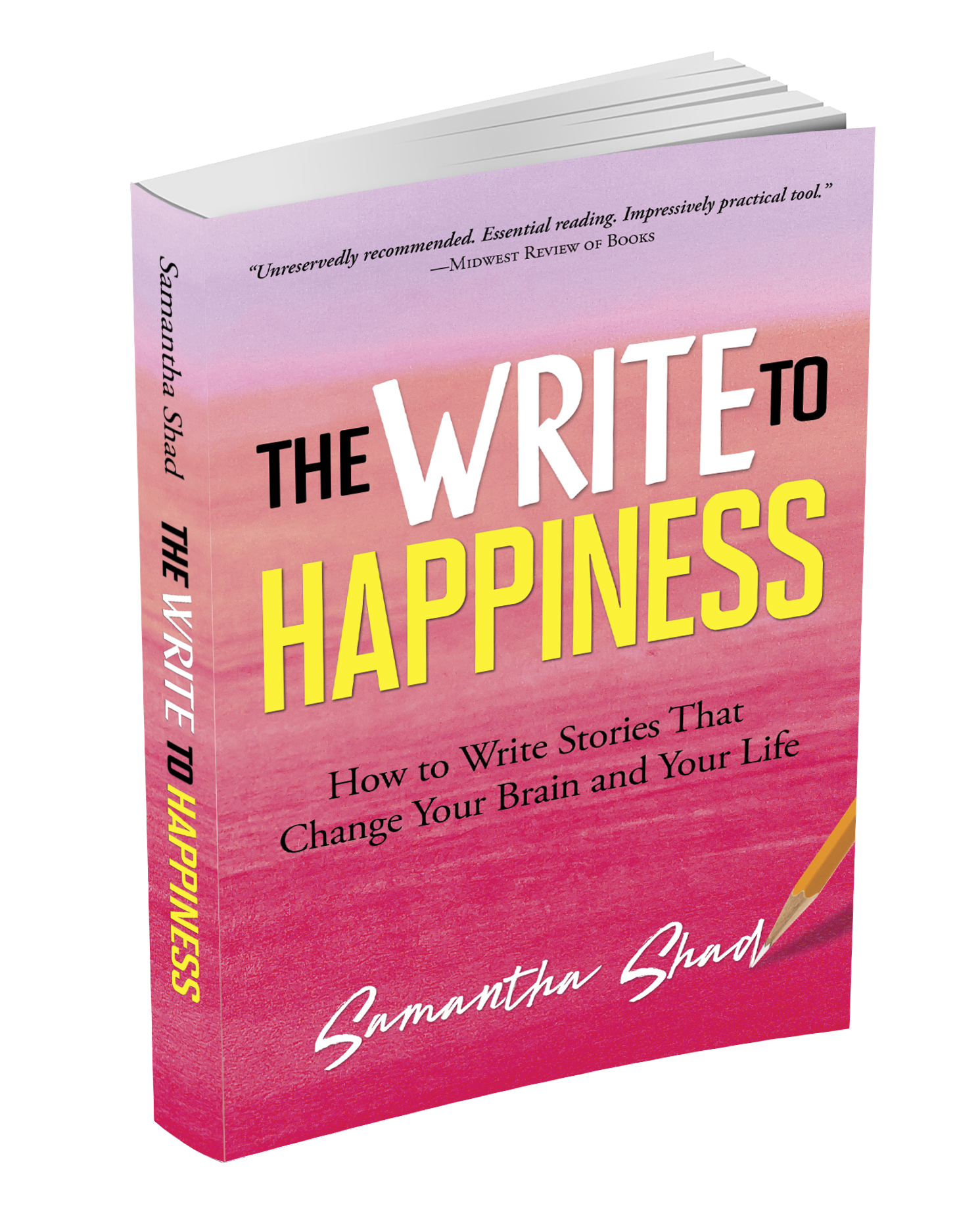–Publisher’s Daily Review
“…does a wonderful job helping the writer become their most effective storytelling self.”
–The Independent Book Review

Former Hollywood Screenwriter Shows Us How The Power Of Story Writing Leads To A Better Life
Samantha Shad knows about the power of writing. As a screenwriter in Hollywood, a professor, and a practicing entertainment attorney, she has experienced professional success in the creative arts. But she also knows that the power of story can provide happiness to anyone who writes – whether as a professional or not. Her new book explores how to be a better writer and shows us how the very act of writing can make our lives better (and happier).
The Write to Happiness: How to Write Stories That Change Your Life (Morgan James Publishers, July 1, 2020, Trade Paperback, $17.95, 224 pages; ISBN: 9781642798098) not only teaches writers and self-help enthusiasts how to craft great stories, but it shows us how to transform our lives and find a way to happiness through the penning of words.
Combining proven writing techniques and insights of what’s worked in Hollywood for generations, Samantha explains the psychology and neuroscience behind writing that positively changes the brain and improves our lives.
The Write to Happiness reveals to us how:
- Personal life experiences are linked to literary aspirations.
- Improving one’s writing also improves his or her quality of life.
- The art of crafting ideas into plot, character, and setting allows us to script our futures.
- The very act of reading — like writing – changes your brain for the better.
- We should define what is a story and how our stories define us.
- Writing stories helps us solve our problems.
Samantha shows us the therapeutic powers of writing and helps us become much better writers. We learn lessons from the scripts of award-winning movies and come to understand why we write what we write.
“There’s magic in writing creatively,” says Samantha. “There’s also neuroscience. Anyone who uses words to tell a story can write their way to happiness. If we put these words on pages or screens and agree to look at them again to improve them, we are writers.”
Samantha should know. She wrote screenplays for 22 years, earning screen credits for Class Action (20th Century Fox) and Vanished Without a Trace (NBC-Universal). She says: “I faced all the real-life and fictional dilemmas that the job entailed, I was also very, very fortunate. Writing saved my life in many ways.”
She offers plenty on:
- How to find the best idea to write about.
- How to properly develop characters.
- The role conflict must play in a story.
- Scene order and the flow of the story.
Part One of her book is a how-to guide to writing to a better life, Part Two explores the social and hard sciences of changing your brain and your mind for the better. It explains why it works.
Samantha points out the numerous benefits of reading – and writing – include reducing stress levels, improving memory, builds self-esteem, develops critical thinking skills, and increases your empathy to create better/stronger/healthier relationships. She even wonders aloud if we have what she calls a “Storyopolis” in our body. “Is there an organ that makes and processes story?” she asks.
Scientists know that neuroplasticity – the ability to change our brain, and thus to change our mind – can help us alter our thinking patterns and effectively change us from within. Samantha applies these principles to writing, in an effective and practical manner, leading us to write a life of happiness.
“Writing is applied neuroplasticity. We change our brain when we work hard on a writing piece and stick with it. We have the necessary focus. We have the effort. We face our obstacles. And we resolve the problems our characters face. We rewrite again and again, changing the new gravel road into a superhighway as our brain incorporates these changes. These resolutions are hard earned and hardwired and fired together. When our characters work to get out of bad situations, they take us along for the resolution.” –Excerpt
